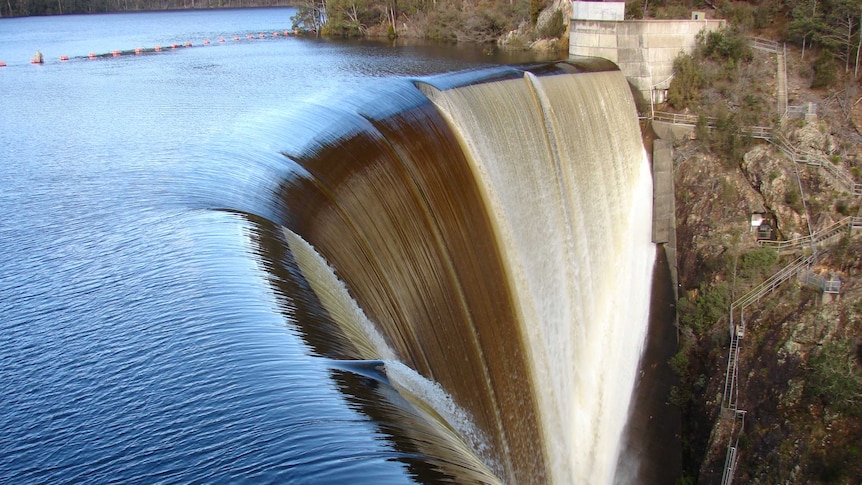An historically dry Tasmanian summer and autumn has led to the state’s dam levels dropping below a “prudent” threshold for the first time in three years.
Key points:
- The specter of low dam levels looms large in the minds of Tasmanians who recall the 2016 energy crisis
- Dam levels are at 32.7 per cent, lower than usual and below Hydro Tasmania’s “prudent storage level”
- An industry figure says Tasmania’s reliance on hydro-electricity meant the state was largely immune from network issues affecting the mainland
The state’s energy storages are at 32.7 per cent, lower than usual and below Hydro Tasmania’s prudent storage level.
It is the first time storages have gone below the prudent storage level — introduced after the 2016 energy crisis where dam levels plunged below 13 per cent due to dry weather and an extended outage of the Basslink undersea cable — since 2019.
Hydro Tasmania generation manager Jack Penny said storages were lower due to the state experiencing its driest summer to autumn period on record, plus unseasonably low July rainfalls.
He said dropping below the prudent storage level was “not cause for alarm”.
“Storages crossed the threshold in 2019, and Hydro Tasmania adjusted its operations accordingly to maintain water storages,” Mr Penny said.
He said Hydro was taking steps to preserve its storages, by importing more energy than it exported from interstate, and could call on the Tamar Valley Power Station’s mothballed combined cycle gas turbines.
Energy expert Marc White said Hydro Tasmania had taken advantage of high wholesale electricity prices so far this year, exporting a large amount of energy this year.
But he said he was not concerned about the state’s energy security, given energy could be imported through Basslink, and use the combined cycle gas turbines if needed.
Tasmania Minerals and Manufacturing Energy Council chief executive Ray Mostogl said he was monitoring the state’s energy situation, but said it was not yet an immediate concern for the state’s large industrials.
“Obviously the next few months of inflow of water and what Hydro will do in terms of importing or exporting will get another level of scrutiny from our membership,” he said.
Mr Mostogl said it was important Tasmania had the right price settings, and could guarantee energy security, as it positioned itself as being a renewable energy exporter.
“I think that it would undermine Tasmania’s case to be a reliable exporter at an industrial scale if it was being disrupted in its supply,” he said.
The national electricity grid has been beset by issues in the past 12 months, due to soaring wholesale electricity prices, with the market operator taking the unprecedented step of suspending the spot market.
Mr Mostogl said Tasmania’s reliance on hydro-electricity meant the state was largely immune from the same issues, but security of supply was key.
“We should be head and shoulders above the rest in terms of reliable supply compared to what we’re seeing with the disruptions and the outages and the shortages with what’s going on in the eastern states,” he said.
“Tasmania should remain well above that in terms of being a reliable and reputable supplier of internationally priced energy.”
Energy Minister Guy Barnett declined to comment.
.
